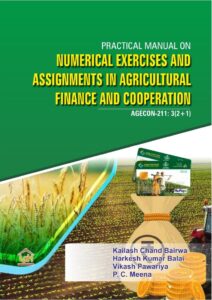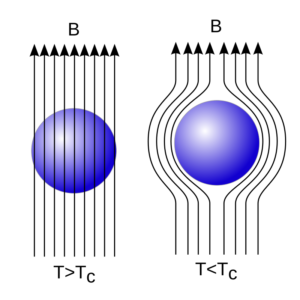Mechanics

This book includes the following topics
Laws of Motion & Frame of Reference
- Laws of motion
Newton’s first law of motion or law of inertia
Newton’s second law of motion
Newton’s third law of motion
- Conservation of momentum & energy
Law of conservation of linear momentum
Law of conservation of angular momentum
Principle of conservation of energy
Work-energy theorem
Conservative forces
- Co-ordinate frames
- Relative motion
- Inertial and non-inertial frame of reference
- Galilean transformation
- Galilean invariance
- Pseudo or fictitious force
- Centrifugal force
- Transformation of coordinate in a rotating frame of reference
- Transformation of velocity & acceleration in a rotating frame of reference
- Transformation of displacement in a rotating frame
- Uniformly rotating frame of reference and Coriolis force
- Effect of centrifugal and Coriolis forces due to earth’s rotation
- Foucault’s pendulum
- Weightlessness
Gravitational Field and Potential
- Introduction
- Newton’s universal law of gravitation
- Gravitational field and its intensity
- Gravitational potential
- Gravitational potential energy
- Gravitational potential and field due to a spherical shell
- Gravitational potential and field due to a solid sphere
- Laplace’s and Poisson’s equation for gravitational potential
- Gauss’s law for gravity
- Gravitational self energy
- Gravitational self energy of a uniform sphere
Dynamics of the System of Particles
- Centre of mass
Centre of mass of a two particles system
Centre of mass of a system of n-particles
Centre of mass of a solid body
- Centre of mass of regular rigid bodies
Centre of mass of a semi circular disc
Centre of mass of hemispherical rigid body
Centre of mass of a uniform right circular cone
Centre of mass of a triangular plate
- Motion of centre of mass (velocity and acceleration of C.M.)
- Centre of mass frame or C-frame
- Conservation of linear momentum
- Kinetic energy of a system of particles
- Collision of particles
Elastic one dimensional collision or head on elastic collision of two particles
Elastic collision in two or three dimension
Perfectly inelastic collision
- Scattering and scattering cross section
- Scattering of α-particle or proton by heavy nucleus (Rutherford scattering by hard spheres)
- System of variable mass (propulsion of rocket)
- Two particle system (two body problem) and reduced mass
- Applications of reduced mass
- Binary star
Rotational Motion and Rigid Body Dynamics
- Angular momentum and torque
- Law of conservation of angular momentum
- Examples or the applications of conservation of angular momentum
Deduction of Kepler’s second law of planetary motion
The orbit of the planet always lies in a fixed plane
Variation of linear speed of planet in its orbit
The speed of a satellite at apogee and perigee
- Physical meaning of angular momentum
- Angular momentum of system of particles and torque
- Angular momentum of system of particles with respect to C.M.
- Rigid body
- The general motion of a rigid body
- Moment of inertia of a rigid body
- Motion of a rotating rigid body, angular momentum and torque
- Applications of the law of conservation of angular momentum
- Equations of rotational motion
- Newton’s laws of rotational motion
- Comparison of linear and rotational motions
- Degrees of freedom
- Euler’s equation
Motion under a Central Force Field and Kepler’s Law
- Central force
- Equation of motion under central force field
- Energy of motion of particle
- Orbital motion of particle under central force field
- Constants of the elliptical orbit
- Circular orbit and their stability
- Kepler’s laws
Law of area
Law of elliptical orbits
Law of periods
Molecular Rotations and Gyroscopic Motion
- Molecular rotations
- Moment of inertia of a diatomic molecule
- Moment of inertia of a tri-atomic molecule
- Intrinsic spin
- Precession of a symmetric top under the action of external torque
- Gyroscope
- Applications of gyroscope
Elasticity
- Introduction
- Stress
Longitudinal or normal stress
Volume or bulk stress
Tangential or shearing stress
Sonometer
- Strain
Longitudinal or tensile strain
Volumetric Strain
Shear strain or strain of shape
- Hooke’s law
- Elastic limit
- Behaviour of a wire or bar under increasing stress [stress versus strain]
- Elastic behaviour of solids in general
Elastic after effect
Elastic hysteresis
Elastic fatigue
- Different types of elasticity
Young’s modulus (elasticity of length)
Bulk modulus
Modulus of rigidity or shear modulus
- Poisson’s ratio
- Work done in stretching a wire
- Theorems of stress & strain
- Relations between the various elastic constants
- Limiting value of Poisson’s ratio
- Determination of Poisson’s ratio for rubber
- Torsion of a cylinder
- Bending of beams
- Cantilever
- Beam supported at its ends and loaded in the middle
- Applications of bending of beams
- Determination of young’s modulus by bending of a beam
Kinematics of Moving Fluid (Viscosity)
- Introduction
- Streamline and turbulent flow
- Reynold’s number)
- Equation of continuity
- Energy of a liquid
- Euler’s equation of motion for fluidity
- Bernoulli’s theorem
- Applications of Bernoulli’s theorem
- Bernoulli’s Theorem from Euler’s equation of motion for fluidity
- Viscosity
- Coefficient of viscosity
- Flow of liquid through capillaries : Poiseuille’s equation
- Limitations and corrections to Poiseuille’s formula
- Poiseuille’s method of determination of η for a liquid
- Determination of viscosity of given liquid using Ostwald’s viscometer/li>
- Motion of a body in a viscous medium and Stokes’ law
- Measurement of viscosity by rotating cylinder method
- Variation of viscosity with temperature and pressure




I visited a lot of website but I think this one holds something special in it in it